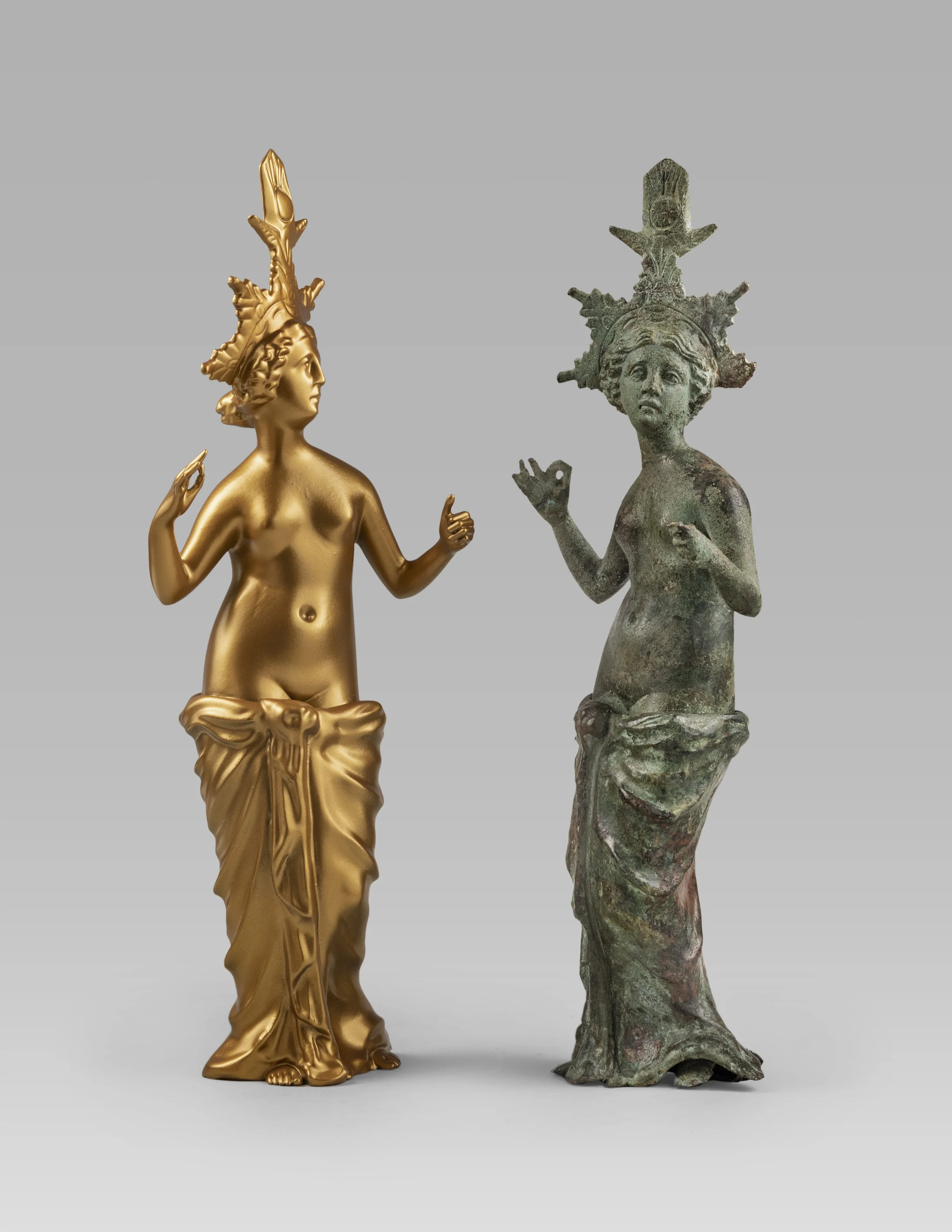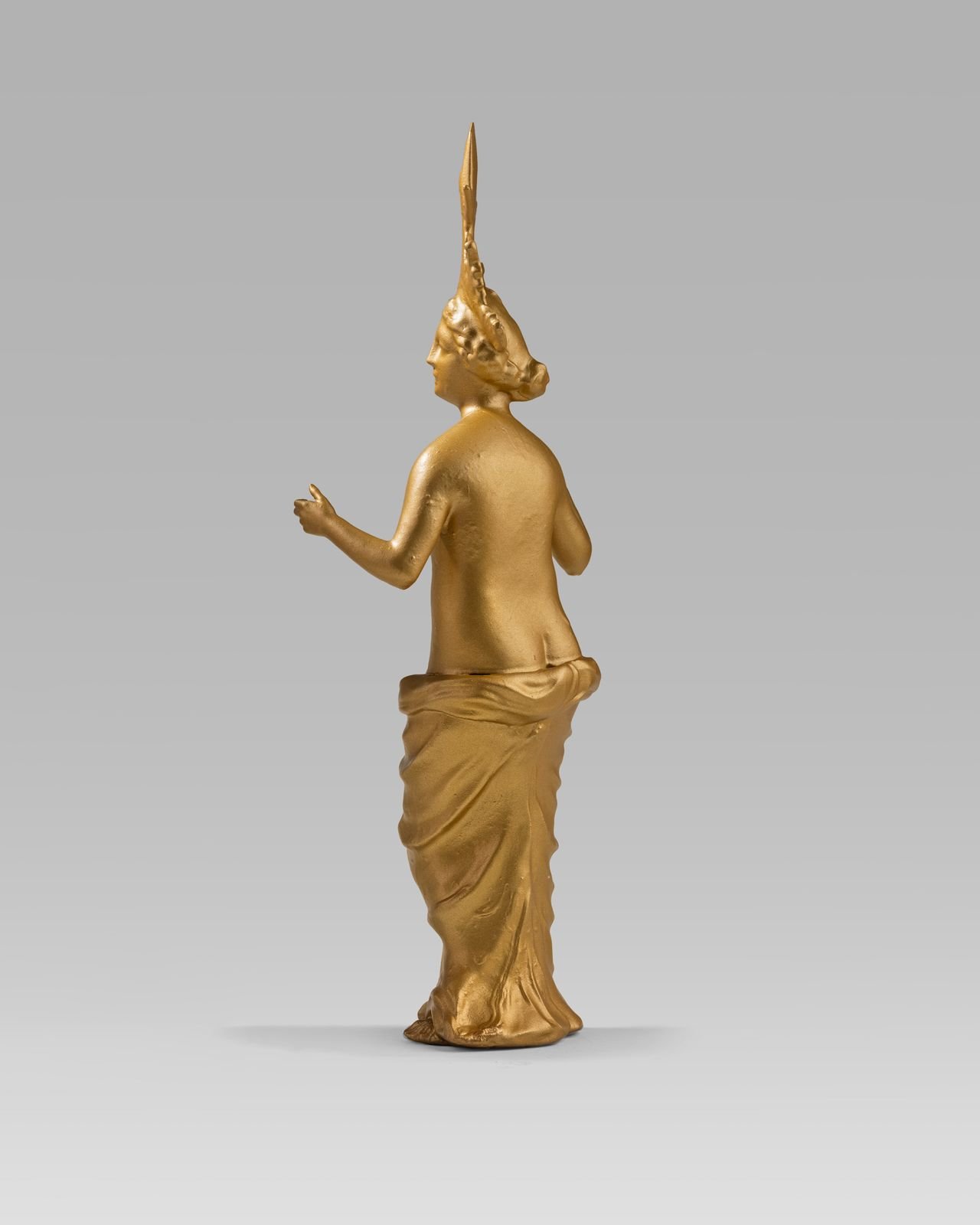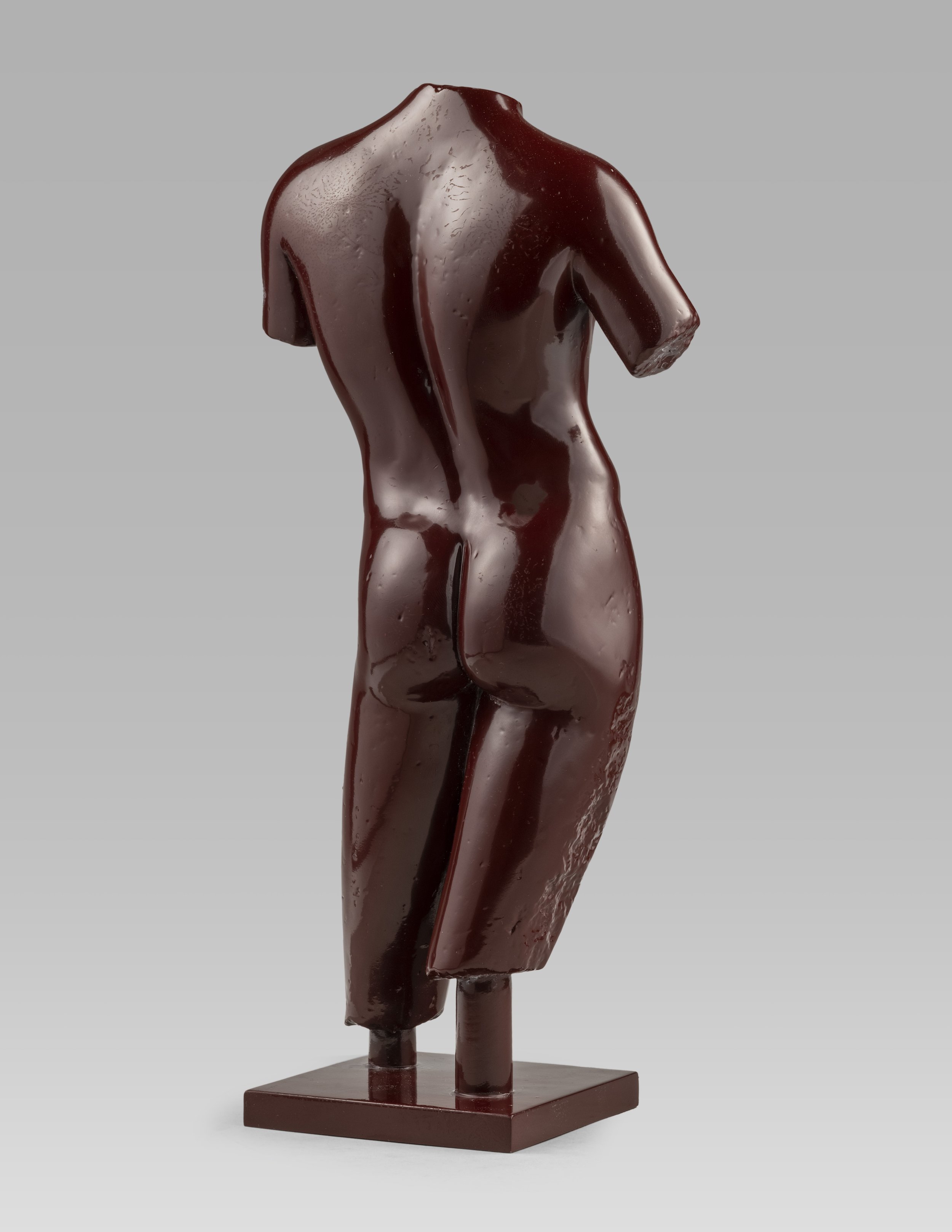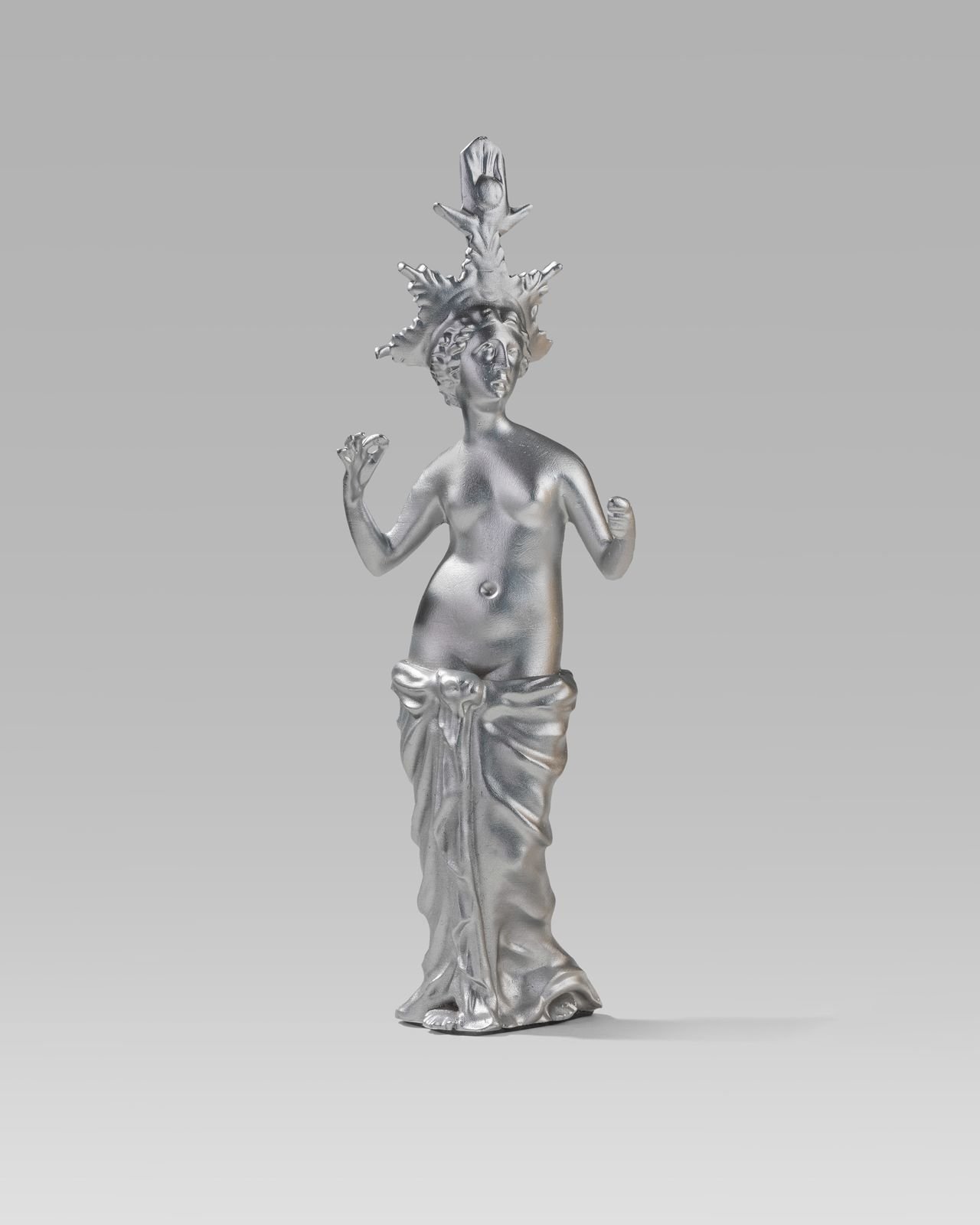 Image 1 of 2
Image 1 of 2

 Image 2 of 2
Image 2 of 2



Gold Aphrodite with Elaborate Diadem
Our polyresin, gold-colored Aphrodite contempo. Bold and opulent, the human eye has a natural affinity towards gold. Embodying the tale of the Apple of Discord, this piece symbolizes the celestial beauty that Paris awarded to Aphrodite, marking her as the fairest of all.
The original bronze statuette of Isis-Aphrodite was popular in the Ptolemaic period of Ancient Egypt between 305 BC and 30 BC; the longest and last dynasty of the empire. The cult of Isis-Aphrodite, whose protective powers included childbirth and motherhood, became especially important in Ptolemaic Egypt with the worshiping of ruling queens, including the dynasty’s most famous ruler, Cleopatra VII. Her cult spread across the Mediterranean and showed great popularity in Italy and Rome.
The name Isis-Aphrodite was based on the previous assimilation of the great Egyptian goddess Isis, the patroness of nature and magic and the ideal mother, with Hathor, the ancient Egyptian god of love. Isis is represented by the sun-disc found on the two horns surmounted by two feathers. She holds a blossom or a piece of fruit in the right hand and likely held a mirror in the clenched left hand.
Most likely, this statue was created for a household shrine. Her soft chin, full lips of the small mouth and large, wide-open eyes represent the goddess ideal face of sensitive feminine beauty.
Our polyresin, gold-colored Aphrodite contempo. Bold and opulent, the human eye has a natural affinity towards gold. Embodying the tale of the Apple of Discord, this piece symbolizes the celestial beauty that Paris awarded to Aphrodite, marking her as the fairest of all.
The original bronze statuette of Isis-Aphrodite was popular in the Ptolemaic period of Ancient Egypt between 305 BC and 30 BC; the longest and last dynasty of the empire. The cult of Isis-Aphrodite, whose protective powers included childbirth and motherhood, became especially important in Ptolemaic Egypt with the worshiping of ruling queens, including the dynasty’s most famous ruler, Cleopatra VII. Her cult spread across the Mediterranean and showed great popularity in Italy and Rome.
The name Isis-Aphrodite was based on the previous assimilation of the great Egyptian goddess Isis, the patroness of nature and magic and the ideal mother, with Hathor, the ancient Egyptian god of love. Isis is represented by the sun-disc found on the two horns surmounted by two feathers. She holds a blossom or a piece of fruit in the right hand and likely held a mirror in the clenched left hand.
Most likely, this statue was created for a household shrine. Her soft chin, full lips of the small mouth and large, wide-open eyes represent the goddess ideal face of sensitive feminine beauty.
Our polyresin, gold-colored Aphrodite contempo. Bold and opulent, the human eye has a natural affinity towards gold. Embodying the tale of the Apple of Discord, this piece symbolizes the celestial beauty that Paris awarded to Aphrodite, marking her as the fairest of all.
The original bronze statuette of Isis-Aphrodite was popular in the Ptolemaic period of Ancient Egypt between 305 BC and 30 BC; the longest and last dynasty of the empire. The cult of Isis-Aphrodite, whose protective powers included childbirth and motherhood, became especially important in Ptolemaic Egypt with the worshiping of ruling queens, including the dynasty’s most famous ruler, Cleopatra VII. Her cult spread across the Mediterranean and showed great popularity in Italy and Rome.
The name Isis-Aphrodite was based on the previous assimilation of the great Egyptian goddess Isis, the patroness of nature and magic and the ideal mother, with Hathor, the ancient Egyptian god of love. Isis is represented by the sun-disc found on the two horns surmounted by two feathers. She holds a blossom or a piece of fruit in the right hand and likely held a mirror in the clenched left hand.
Most likely, this statue was created for a household shrine. Her soft chin, full lips of the small mouth and large, wide-open eyes represent the goddess ideal face of sensitive feminine beauty.
Ancient Original
Roman, ca. 1st - 2nd century A.D.
Bronze
H: 28.5 cm (11.2 in)
Contempo
2024
High-grade polyresin, painted and hand-polished
H: 28.5 cm (11.2 in)
Creation
Our contempos begin with ancient inspiration and are reimagined in New York City.
We digitally refine, sculpt, and adapt ancient figures through intensive digital modeling and sculpting. Then we select the material and scale, combining precise 3D printing and ancient casting and molding techniques. The coloring and the meticulous hand finish to each contempo gives every work a unique and iconic presence.













